- ⭐ Aakash Wagle, GMR Airport Ltd.
- ⭐ Aashish Bhagat, Gravatin Global
- ⭐ Chirag Shetty, Shoppers Stop
- ⭐ Gaurav Kapoor, Swatch Group India
- ⭐ Arvind Verma, Redtape Ltd
- ⭐ Prashant Nayar, Snapmint
- ⭐ Nand Kumar, Arvind Fashion And Lifestyle
- ⭐ Anil Ippagunta, Baskin Robbins
- ⭐ Ayushi Gupta, Zerohour Hypermart
- ⭐ Dr Lawrence Fernandes, Rai
- ⭐ Shashi Kumar Pankaj, Pngsl
- ⭐ Aniket Wani, Lodha Developers
- ⭐ Nikhil Roy, Bhartiya Urban Pvt Ltd
- ⭐ Goutam Ash, Shoppers Stop
- ⭐ Syed Faheem, Wildcraft India
- ⭐ Deepak Pujari, Reliance
- ⭐ Vikram Singh Rathore, Tales & Stories
- ⭐ Anirudh Desai, Bryan And Candy I Pvt Ltd
- ⭐ Amardeep Singh, Ashok Malhotra Group
- ⭐ Shivani Aggarwal, World Of Watches
- ⭐ Manish Singh, Blackberry
- ⭐ Biswajit Patnaik, Mandate & Beyond
- ⭐ Ruturaj Patwa, Marks And Spencer
- ⭐ Amit Kumar, AKB
- ⭐ Bhuvanesh Mendiratta, Miraj Cinemas
- ⭐ Siddharajsinh Solanki, Softlogic Group
- ⭐ Shaurya Somani, Nano Theatre
- ⭐ Jasdeep Singh, Michael Page
- ⭐ Tarak Bhattacharya, Mad Over Donuts
- ⭐ Sohil Lalani, Eridani
- ⭐ Arpit Tandon, JLL
- ⭐ Animesh Kumar, Being Human
- ⭐ Tarun Narula, Core Realty
- ⭐ Sudhanva Sheshadri, Ramsons Trendsquares Realty Llp
- ⭐ Krishna Kumar Vijayan, Isthara Parks Private Limited
- ⭐ Suheil Shaikh, Metro Brands
- ⭐ Rakesh Waths, Kewal Kiran Clothing Limited
- ⭐ Satish Kottakota, NY Cinemas
- ⭐ Sachin Nakti, Shopping Centres Association Of India (Scai)
- ⭐ Mohammed Yousuf, Global Clothing Pvt Ltd
- ⭐ Benazir Miller, Tata International Ltd.
- ⭐ Aditi Dongre, Timezone
- ⭐ Mohammed Saleem, Shoppers Stop
- ⭐ Vikita Chaudhary, Kidzania India
- ⭐ Jayraj Bajaj, Dove Garments P. Ltd.
- ⭐ Musab Siddiqui, Abacus Lifestyle Brands Ltd
- ⭐ Mohit Grover, NIFT
- ⭐ Shikha S Mazumdar, Home Centre
- ⭐ Sunny Luthra, Unihawk Ventures Pvt Ltd
- ⭐ Daisy Rani, CBRE
- ⭐ Ashish Singh, Swiss Beauty
- ⭐ Sahil Gupta, ANS Retail
- ⭐ Mayank Gupta, Stove Kraft Limited
- ⭐ Akshay Anand Yadav, CBRE
- ⭐ Nitin Bir, Brookfield Properties
- ⭐ Mohammed Fazil, GLS Displays
- ⭐ Mohsin Dokaria, Orra
- ⭐ Amar Motwani, B.Kandhari Properties
- ⭐ Shivraj Singh Negi, Unlimited
- ⭐ Subha Mohan, Timezone
- ⭐ Sridhar, SPRVL
- ⭐ Nitin Bansal, Miniso
- ⭐ Harshita Dhiman, Seher Jaipur
- ⭐ Piya Bhusari, ENP Epicurean & Co
- ⭐ Rohan Jangam, Adidas
- ⭐ Vignesh Kumbhatil, Amazon
- ⭐ Sonia Sharma, Rcube Projects Private Limited
- ⭐ Sebastian Naik, Lacoste
- ⭐ Ankur Gupta, Jubilant Foodworks
- ⭐ Shravan Nawany, Acetron Spaces Llp
- ⭐ Varun Juneja, Lenskart
- ⭐ Suhani Mavani, Brand Concepts
- ⭐ Amjad Khan, Panda Street
- ⭐ Serinlal T James, Vismay
- ⭐ Naveen Veera, Secure Parking
- ⭐ Arun Ab, Libas
- ⭐ Jasmin Vora, Peora Jewellery
- ⭐ Kashyap Mehta, Pine Labs
- ⭐ Smita Joshi, Nesterra
- ⭐ Deepak Zutshi, Nexus Select Trust
- ⭐ Abhijith R, Crossword Bookstores Pvt Ltd
- ⭐ Deepa Mukherjee, Arvind Fashions Ltd.
- ⭐ Tasneem Saylawala, Naseem Perfume Llp
- ⭐ Rohit Shinde, Unimat Concepts Pvt Ltd
- ⭐ Sachin Singh, Swatch Group India
- ⭐ Harshit Kochar, Kochar Retail Ventures
- ⭐ Abhishek Saxena, Realistic Realtors
- ⭐ Mohit Shah, Abacus Lifestyle Brands Ltd
- ⭐ Lokesh Bharwani, Mad Over Donuts
- ⭐ Sandeep Malik, Bestseller
- ⭐ Manish Jeetwal, Meena Bazaar
- ⭐ Ankur Chawla, Hlp Grup
- ⭐ Mayur Kulkarni, The Shirt House
- ⭐ Anant Basudev Shadangi, Rozana Gaming And Entertainment
- ⭐ Subhadip Chatterjee, Ajay Begraj Group
- ⭐ Yerramilli Sri Chakra Visakh, Tata Croma
- ⭐ B. Aditya Kumar, Mandate & Beyond
- ⭐ Dheeraj Maini, Kenangan Coffee- India
- ⭐ Mahesh Shinde, Flowchart Retail Consultancy
- ⭐ Huzaif Hanfi, Prozone Intu
- ⭐ Dattaram Dalvi, Metro Brands
- ⭐ Ankit Chhabra, Adani Airport Holdings Limited
- ⭐ Sanjyot P Vaidya, S & O Investments.In
- ⭐ Maninder Singh Chahal, Imagicaaworld Entertainment Ltd.
- ⭐ Harsh Vardhan Arya, Infinite Solutions
- ⭐ Aditya Joshi, Mystical Group
- ⭐ Chandra Shekhar, Hear Clear
- ⭐ Naresh Kumar, Goodearth
- ⭐ Harsh, Singla Sweets
- ⭐ Satinder Singh Rawat, India Retail & Hospitality
- ⭐ Achla Chawla, Swatch Group India
- ⭐ Shailesh Mathias, Bestseller
- ⭐ Puneet Mathur, Swatch Group India
- ⭐ Vineet Rathi, Game X
- ⭐ Komal Sood, Ghoomar
- ⭐ Umesh Patil, Limelight Pan India
- ⭐ Nishith Bhanushali, Lodha Developers
- ⭐ Mohak Tyagi, Trehan Iris
- ⭐ Vikas Ladha, Kalpataru Retail Ventures Pvt Ltd
- ⭐ Shailesh Nair, Aditya Birla Fashion & Retail Ltd
- ⭐ Piyush Kalra, Sarthi Developers
- ⭐ Vikky Lagishetty, Aditya Birla Fashion & Retail Ltd
- ⭐ Aditya Mehta, Secure Parking
- ⭐ Aditya Gogia, Essel Estate Agents
- ⭐ John Bovas, Tea Post Limited
- ⭐ Saneen Abdul Azeez, Ibadi Perfumes
- ⭐ Sagar Haldankar, Baskin Robbins
- ⭐ Natasha Soni, Reia Leasing Advisory
- ⭐ Sumit Suneja, Bestseller
- ⭐ Gurman Gill, Pine Labs
- ⭐ Jharna Lalwani, Nexus Select Mall
- ⭐ Dilmeet Chadha, Wisphot
- ⭐ Shalini Priya, Michael Page
- ⭐ Jemima Rodrigues, Lodha Developers
- ⭐ Pradeep Kharat, Future Market Networks Limited
- ⭐ Rajesh Dubey, Rene
- ⭐ Harpal Singh, ANS Retail
- ⭐ Anushka Sharma, Lodha Developers
- ⭐ Rohan Vinaykiya, Save Management
- ⭐ Faizan Ali, Fancytech
- ⭐ Vivek Nair, Ramsons Trendsquares Realty Llp
- ⭐ Neeraj Modi, Vardhaman Amrante
- ⭐ Nelson Fernandes, Exalenze
- ⭐ Sumedha Jain, Jain Amar Clothing
- ⭐ Jiya Thakkar, Abni Kasper Llp
- ⭐ Thirumurthy D, Nexus Mall
- ⭐ Nishant Ranjan, Tata Croma
- ⭐ Rajeev Srivastava, Migsun
- ⭐ Ankur Purohit, Sarthi Developers
- ⭐ Santosh Doiphode, Mad Over Donuts
- ⭐ Prem Chhabra, Chaayos
- ⭐ Sharad Shukla, The Sleep Company
- ⭐ Kunal Choudhary, Sree Thirumala Infra Pvt Ltd
- ⭐ Parambir Singh, Nurix Ai
- ⭐ Chintan Roliya, Rajeshkumar Halchand Roliya
- ⭐ Jatin Mali, Jadeblue
- ⭐ Sagar Borgaonkar, Arvind Fashion And Lifestyle
- ⭐ Zeisha Lalani, Eridani
- ⭐ Gaurav Tripathi, Ciao Retail
- ⭐ Kapil Singla, Jubilant Foodworks
- ⭐ Rahul Chaudhari, Chaudhari Lifestyle Pvt Ltd
- ⭐ Harshad, Jsmp Property Consultants
- ⭐ Arjun Aran, One Galle Face Mall - Shangri-La Hotels Lanka Pvt Ltd
- ⭐ Munish Mathur, Brookfield Properties
- ⭐ Deepak Krishna Srivastava, Bharti Real Estate
- ⭐ Rajani Meena, Tvs Electronics
- ⭐ Raj Shroff, Aarayaa - The Cfi Group
- ⭐ Saurabh Mehta, Omaxe
- ⭐ Manish Vig, Aditya Birla Fashion & Retail Ltd
- ⭐ Ashish Goyal, Gdk Jewels Pvt Ltd
- ⭐ Manish Jain, Maetrix Consulting
- ⭐ Khirod Mahapatra, Max
- ⭐ Navjot Nanda, GMR Airport Ltd.
- ⭐ Tanmay Pawar, Fabmaven
- ⭐ Bimalendu Tarafdar, Sanjay Ghodawat Group
- ⭐ Harshal P, Biretail
- ⭐ Kenjiro Ikawa, Gdx Commerce India
- ⭐ Nissan Joseph, Metro Brands
- ⭐ Rahul Kumar, Ambuja Neotia
- ⭐ Dileep Lodhi, Aadi Realtors
- ⭐ Karan Modi, B.Kandhari Properties
- ⭐ Kamal Vaishnav, Haldiram
- ⭐ Brinder Rault, Allegro Moderato International
- ⭐ Udit Mittal, Rdp Retail Hub Pvt Ltd
- ⭐ Jayshree Shah, Jus Jumpin
- ⭐ Rahul Mishra, Sonahul Properties Private Limited
- ⭐ Anirban Kundu, Ambuja Neotia
- ⭐ Pradeep Tailor, BHPC Personal Care P. Ltd.
- ⭐ Rushabh Patel, Save Management
- ⭐ Asha Kumari, Unison
- ⭐ Akash Tiwari, BPCL
- ⭐ Jo John Simon, Realistic Realtors
- ⭐ Anirudha Padmanabhan, SPRVL
- ⭐ Abhinav Agarwal, Chaayos
- ⭐ Rahul Patil, Pngsl
- ⭐ Amit Garg, Cinepolis
- ⭐ Rahul Desai, Roman Group
- ⭐ Sandesh Utekar, Bryan And Candy I Pvt Ltd
- ⭐ Ovais Ali, Beccos
- ⭐ Sandeep D. Chauhan, Magnaterra Realty P. Ltd.
- ⭐ Jatin Thakkar, Jash Enterprise
- ⭐ Uttam Kumar, Salzaa-Fashion In Minutes
- ⭐ Monica Sharma, Bharti Real Estate
- ⭐ Aditya Agarwal, Westway Group
- ⭐ Vishal Gupta, Guptasons Infra Pvt. Ltd (Ciril)
- ⭐ Abhishek Kumar, Metro Brands
- ⭐ Anantha Swami, Tibbs Food
- ⭐ Rohit Koul, Realkey Advisory India Llp
- ⭐ Jyoti Sinha, Khaitan & Co
- ⭐ Gursher Singh, Infinity Realtors
- ⭐ Rachna Lanewala, The One Off
- ⭐ Bornali Deb, Haldiram
- ⭐ Shahid Bichu, Brandzstrom
- ⭐ Ankur Maheshwary, Modern Masti Pvt Ltd
- ⭐ Akshay Gite, Trent
- ⭐ Anup Debroy, Mantri Developer
- ⭐ Srirup Sen, Ambuja Neotia
- ⭐ Harinoor Jham, Tanvi Real Advisory
- ⭐ Paras Vats, Apparel Group India Pvt Ltd
- ⭐ Sam Shalgaonkar, X-Rite India Private Limited
- ⭐ Kartik Pathak, Saffron Lifetsyle
- ⭐ Saman Singh, Oud Arabia
- ⭐ Anubhav Aggarwal, Big Steps Ventures Pvt. Ltd.
- ⭐ Jayy Roshan Chawlaa, Roshans Infradeal
- ⭐ Lalit Manchanda., Guptasons Infra Pvt. Ltd (Ciril)
- ⭐ Kirti Bhushan, Guess India
- ⭐ Rajesh Dube, Haldiram
- ⭐ Milin Rohinesh, Cushman & Wakefield
- ⭐ Unmisha Bhatt, Tonic Worldwide
- ⭐ Vishal Gupta, Mantri Developer
- ⭐ Himanshu Narendra Somaiya, Himanshu Narendra Somaiya
- ⭐ Srushti Khedekar, Mad Over Donuts
- ⭐ Srishti Tanwani, Zenzior Brand Technology Pvt. Ltd.
- ⭐ Simi Gangeria, Runwal Realty
- ⭐ Namrata Bansal, Aishwaryam Group
- ⭐ Kamal Shah, Tata Technologies
- ⭐ Kanika Malkotia, Pvr Inox Ltd.
- ⭐ Juhi Parekh, Arvind Fashion And Lifestyle
- ⭐ Ajay Ajmera, Ajmera Fashion Limited
- ⭐ Devansh Mansingka, Shree Mansingka Projects Ltd
- ⭐ Amanpreet Banga, Amanpreet Banga Advisory Llp
- ⭐ Abhishek Maria, Aditya Birla Fashion & Retail Ltd
- ⭐ Onkar Shetye, Aurum Realestate Developers Ltd
- ⭐ Preeti Singh, Unison
- ⭐ Utsaa Roy, Being Human
- ⭐ Radhika Agrawal, Krishna United
- ⭐ Joshveen Kaur, Seher Jaipur
- ⭐ Himanshu Srivastava, Mvn Infra
- ⭐ Sanjay Yadav, BPCL
- ⭐ Bhavesh Navadiya, Alan Scott Retail Ltd
- ⭐ Bharat Kaul, Image Fashion'S
- ⭐ Ameya Jadhav, Roman Group
- ⭐ Amit Garg, Idigizen Pvt. Ltd.
- ⭐ Umang Vora, The Belgian Waffle Co
- ⭐ Ahmad Raza Khan, Wook Realty
- ⭐ Liton Das, Nurix Ai
- ⭐ Nandkishor Mehta, Ks Ruchi Lifestyle Pvt Ltd
- ⭐ Rajanesh Nair, Aditya Birla Fashion & Retail Ltd
- ⭐ Rahul Gupta, Trent
- ⭐ Narendra Thakkar, Ariane Group
- ⭐ Arvind Thakur, Mystical Group
- ⭐ Mohammed Rehan Ali, Global Clothing Pvt Ltd
- ⭐ Kartik Lakhotia, Nykaa
- ⭐ Rajesh P S, Chaayos
- ⭐ Rahul Sewaiwar, Alka Trading
- ⭐ Vishal Shah, Good Flippin Burgers
- ⭐ Kapil Sachdeva, RAI
- ⭐ Harmanpreet Singh, Food Exotica Pvt Ltd
- ⭐ Arvind Mayar, Secure Parking
- ⭐ Deva Jyotula, Kalpataru Retail Ventures Pvt Ltd
- ⭐ Suryansh Saraf, Mumuso
- ⭐ Gyanendra Jha, Absolute Brand
- ⭐ Anand Balasubramanian, Shoppers Stop
- ⭐ Ranjeet Thakur, Eversub India Pvt Ltd
- ⭐ Vipul Mehra, Aditya Birla Fashion & Retail Ltd
- ⭐ Rishi Bansal, Bansal Aesthetics
- ⭐ Parisha Trivedi, Jadeblue
- ⭐ Mohammed Arif, Arvind Fashion And Lifestyle
- ⭐ Manoj Chouhan, Cultfit Healthcare Private Limited
- ⭐ Shivangi Bhatnagar, Unison
- ⭐ Ajinkya Joshi, Mystical Group
- ⭐ Sugandha Goyal, Gdk Jewels Pvt Ltd
- ⭐ Pritam Suru, Lotus Marketplace Pvt Ltd
- ⭐ Madhur Laddha, Tapadia City Centre
- ⭐ Jermina Menon, Bhartiya Urban Pvt Ltd
- ⭐ Manpreet Singh Vohra, Rozana Gaming And Entertainment
- ⭐ Shubhojit Pakrasi, Omaxe
- ⭐ Ram Nitesh Jaldu, Helios Greens
- ⭐ Kushal Bhagat, Zero Hour Store
- ⭐ Ramyaraj Rath, Style Baazar
- ⭐ Krishna Sumanth, Alphabake
- ⭐ Anupam Agrawal, Max
- ⭐ Subhankar Bhattacharya, Mad Over Donuts
- ⭐ Rupam Bhattacharjee, Waysahead Technology Pvt. Ltd.
- ⭐ Nirzar Jain, Nexus
- ⭐ Bhavesh Gajjar, Kidzania India
- ⭐ Arpan Tyagi, Arvind Fashion And Lifestyle
- ⭐ Tejas Jadhav, Brand Concepts
- ⭐ Rajeev Sharma, Blackberry
- ⭐ Pankaj Lanke, Nano Theatre
- ⭐ Rethun Manikkoth, Bhartiya Urban Pvt Ltd
- ⭐ Nazim Virji, Regal Shoes
- ⭐ Nitin Saraf, Being Human
- ⭐ Naveen Goel, Panchanan Intl
- ⭐ Saurabh Ramdorai, Klipt By Bova
- ⭐ Arshdeep, Oud Arabia
- ⭐ Sandeep Agrawal, Rene
- ⭐ Shekhar Kochar, Kochar Retail Ventures
- ⭐ Ashish Pandey, Cineline India Ltd
- ⭐ Arnab Banerjee, Nangia Andersen Llp
- ⭐ Ragvendra Vikram, Unison
- ⭐ Zainab Fatima, Shibui-Health And Wellness
- ⭐ Preet Lamba, Being Human
- ⭐ R. Karthikeyan, Bangalore International Airport Limited
- ⭐ Inubhai, Inchrealtor
- ⭐ Raina Roy, V Bazaar
- ⭐ Nilay Thakkar, Ariane Group
- ⭐ Shaliq Saleem, Varikkodan Garments
- ⭐ Sharath Kumar S, Shibui-Health And Wellness
- ⭐ Manish Srivastava, Gravatin Global
- ⭐ Parind Ankleshwaria, Metro Brands
- ⭐ Afzal Shaikh, Crossword Bookstores Pvt Ltd
- ⭐ Devesh Kumar, Max
- ⭐ Rashid Shaikh, Ecity Real Estates Pvt.Ltd (Fun Republic)
- ⭐ Shanith Godagama, One Galle Face Mall - Shangri-La Hotels Lanka Pvt Ltd
- ⭐ Prem Kumar Singh, Goods & Foods
- ⭐ Vivek Jaiswal, Amazon Shipping
- ⭐ Vaagesh Muttreja, Relation Realtech Pvt. Ltd.
- ⭐ Bhanu Sundra, Rrbv
- ⭐ Krashnika Bansal, Ecavo Agro Daily Pvt. Ltd.
- ⭐ Ishmeet Singh Vohra, Rozana Gaming And Entertainment
- ⭐ Sudhir Dnyanwal, Metro Brands
- ⭐ Pankaj Pandey, Brookfield Properties
- ⭐ Sumana Iyengar, Goavega Software India Pvt Ltd
- ⭐ Fatima Zohra Feroz, Shibui-Health And Wellness
- ⭐ Rajat Makkar, Growvisorrealty
- ⭐ Sulochana Sharma, Neo Risk Management And Insurance Brokers
- ⭐ Ammol Ramtteke, Haldiram
- ⭐ Karan Arora, Big Steps Ventures Pvt. Ltd.
- ⭐ Sakshi Vasandani, Core Realty
- ⭐ Vidit Dedhia, Onestop Retail Pvt Ltd
- ⭐ Monica Rohra, Atmosphere-The Store Makers
- ⭐ Surender Pal, Bhutani Infra
- ⭐ Jayashree Birje, Crimailed
- ⭐ Arun P, SPRVL
- ⭐ Amit Chawla, Mustard Clothing Company Pvt Ltd
- ⭐ Shirish Handa, Aditya Birla Fashion & Retail Ltd
- ⭐ Ashok Mukhi, Solar Creations Pvt Ltd
- ⭐ Manjeet Singh, Pvr Inox Ltd.
- ⭐ Harshad Almelkar, Nesterra
- ⭐ Bhai Gurjinder Singh, Nh7 Factory Outlet
- ⭐ Vipula Poddar, Brookfield Properties
- ⭐ Jiyahoor Shaikh, Baggit India Pvt. Ltd.
- ⭐ Adish Oswal, Oswal Group
- ⭐ Upendra Taneja, Signature Global
- ⭐ Shahab Mitha, Exalenze
- ⭐ Sandeep Pk, Tvs Electronics
- ⭐ Viju Machery, Secure Parking
- ⭐ Nirav Momaya, Baskin Robbins
- ⭐ Shashank Sinha, Modern Masti Pvt Ltd
- ⭐ Karan Bansal, Wisphot
- ⭐ Prashant Brahmane, Tea Post Limited
- ⭐ Minesh Prajapati, Sadguru Clothing Co
- ⭐ Surbhi Aggarwal, Mantri Developer
- ⭐ Anant Chhabra, Sree Thirumala Infra Pvt Ltd
- ⭐ Ankush Goyal, MRG Fashions P. Ltd.
- ⭐ Simran Chandhoke, Swatch Group India
- ⭐ Kketan, Kenee Ventures - Mall Advisory & Showroom Leasing
- ⭐ Mandar Sudhir Kamat, Landmark Group
- ⭐ Prachur Baheti, Trent
- ⭐ Harshita Thakkar, Abni Kasper Llp
- ⭐ Suhas Dhage, Being Human
- ⭐ Ashish Kanakia, Cineline India Ltd
- ⭐ Suman Mondal, Ambuja Neotia
- ⭐ Pragun Ranjan, Brookfield Properties
- ⭐ Arjun Gupta, Rozana Gaming And Entertainment
- ⭐ Shreyes Shekhar, Life Pharmacy
- ⭐ Nikhil Shah, Fabmaven
- ⭐ Lokesh Mishra, Liberty Shoes
- ⭐ Daksha Poptani, NY Cinemas
- ⭐ Parag Agrawal, BPCL
- ⭐ Gurjeet Raheja, Hlp Grup
- ⭐ Sohail Patca, D S Corporation
- ⭐ Shitij Chawla, Marks And Spencer
- ⭐ Gaurav Bansal, Felix Realty
- ⭐ Akash Kumar, Fancytech
- ⭐ Srinivas Kolluru, Ghodawat Retail Private Limited
- ⭐ Diksha Bhatia, Gioia
- ⭐ Saurabh, Singla Sweets
- ⭐ Gaurav Thakore, Metro Brands
- ⭐ Luke Thomas, Mela Platforms Pte Ltd
- ⭐ Vipul Chaudhari, Chaudhari Lifestyle Pvt Ltd
- ⭐ Arun Ganapathy, Zenith Cfo Support Llp
- ⭐ Alexandra Crepin, Etai Infopro Digital
- ⭐ Preeti Singh, Bhutani Infra
- ⭐ Smita Khanna, Aditya Birla Fashion & Retail Ltd
- ⭐ Abhishek Gupta, Ecavo Agro Daily Pvt. Ltd.
- ⭐ Milan Dave, Cushman & Wakefield
- ⭐ Hardik Khetia, Rai
- ⭐ Vikash Baid, Mad For Waffles
- ⭐ Manish Srivastava, Realistic Realtors
- ⭐ Abhishek, Vardhaman Amrante
- ⭐ Bharat Gabani, Zenzior Brand Technology Pvt. Ltd.
- ⭐ Mayur Kamath, Bestseller
- ⭐ Karun Mehta, Khaitan & Co
- ⭐ Deepak Modi, Bestseller
- ⭐ Ajay Bindroo, Beverly Hills Polo Club
- ⭐ Sarbjeet Singh, Tdi Infratech Ltd.
- ⭐ Chendhuran, SPRVL
- ⭐ Het Shah, Ags Group Inc
- ⭐ Sudhanshu Kejriwal, Keydemand
- ⭐ Inderdeep Singh, Wisphot
- ⭐ Suresh Jayawardana, Softlogic Group
- ⭐ Sanjive Datta, Prime Leasing Solutions
- ⭐ Vivek Jain, Being Human
- ⭐ Minal Dhamankar, Adani Airport Holdings Limited
- ⭐ Abhilasha Katwale, Tibbs Food
- ⭐ Arnab Choudhury, Baskin Robbins
- ⭐ Chintan Gala, Mad Over Donuts
- ⭐ Vilas Gajbhiye, Rene
- ⭐ Sharath Varma, GMR Interchange Hyderabad
- ⭐ Sanya Runwal, Runwal Realty
- ⭐ Ankita Verma, Cushman & Wakefield
- ⭐ Lakhbir Singh, Kewal Kiran Clothing Limited
- ⭐ Kanika Agarwal, Westway Group
- ⭐ Gagandeep Singh Gandhi, Infinity Realtors
- ⭐ Shubhank Parashar, Aditya Birla Fashion & Retail Ltd
- ⭐ Rajesh Chokhani, Shibui-Health And Wellness
- ⭐ Sidak Dua, Ashok Malhotra Group
- ⭐ Zoheb Khan, Bare International
- ⭐ Sachin Sachdeva, Gravatin Global
- ⭐ Gopal Machani, Scai
- ⭐ Santanu Pai, Pvr Inox Ltd.
- ⭐ Gaurav Pande, Jubilant Foodworks
- ⭐ Shagufta Iqbal, Bhartiya Urban Pvt Ltd
- ⭐ Aradhya Bajpai, Pepe Jeans London
- ⭐ Fairoze Khan, Hay! Clothing
- ⭐ Shivani Bhatia, Realty Advisors India
- ⭐ Anuradha Singh, Runwal Realty
- ⭐ Mihir Suvanam, Michael Page
- ⭐ Sushil Singh, Trehan Iris
- ⭐ Murtuzza Bhatia, Klipt By Bova
- ⭐ Lalit Rawat, Core Realty
- ⭐ Urmi Singh, Brand Concepts
- ⭐ Pari Sheth, Amazon Shipping
- ⭐ Ruta Machekar, Mad Over Donuts
- ⭐ Abhijit Mandal, Ciel Group
- ⭐ Amit Rout, Nykaa
- ⭐ Amit Jeswani, Waisted Leather Products Llp
- ⭐ Aashi Mishra, Ghoomar
- ⭐ Manish Sharma, Karigari Ventures P Ltd
- ⭐ Amir Md, Ajfan Dates And Nuts
- ⭐ Vikram Narula, Ajwain Watches
- ⭐ Anurag Mishra, Rozana Gaming And Entertainment
- ⭐ Mukesh Kumar, Growvisorrealty
- ⭐ Mukesh Kumar Goyal, MRG Fashions P. Ltd.
- ⭐ Amol Bhatt, Haldiram
- ⭐ Anshika Gupta, Highway Hub Amenity Private Limited
- ⭐ Krishna Yadav, Secure Parking
- ⭐ Devan Girdhar, Unlimited
- ⭐ Virent Gala, Gute Reise India Pvt. Ltd.
- ⭐ R Ravikumar, Ppms Field Marketing Pvt Ltd
- ⭐ Vijay Kapoor, Brand Width Realty
- ⭐ Ankur Mittal, Shri Vinayaka Group
- ⭐ Gopalakrishna Machani, Shopping Centres Association Of India (Scai)
- ⭐ Ravinder Tokas, Doner & Burger
- ⭐ Rajeev Kalia, Whiteland Corporation Pvt Ltd
- ⭐ Raunak Agarwal, Mumuso
- ⭐ Subrat Biswal, Swatch Group India
- ⭐ Gautam Jain, Rai
- ⭐ Karan Sukeja, Ashok Malhotra Group
- ⭐ Vineet Narang, Hear Clear
- ⭐ Firil M Faisal, Ibadi Perfumes
- ⭐ Siddharth Kapoor, Pvh Arvind Fashion
- ⭐ Kunal Sheth, Metro Brands
- ⭐ Ajay Kumar, Guess India
- ⭐ Riya Goel, Westway Group
- ⭐ Brijay Arya, Adani Airport Holdings Limited
- ⭐ Aditya Paralikar, Nyati Group
- ⭐ Faisal Dhorajiwala, D S Corporation
- ⭐ Shivender Panwar, Smartq-Compass Group
- ⭐ Abdul Rahman, Figalus Fruits And Nuts Pvt Lts ( Nut Bazar)
- ⭐ Sunil Kumar, Headstart Global Pvt Ltd
- ⭐ Barun Kumar, Smartq-Compass Group
- ⭐ Kunal Kapoor, Nykaa
- ⭐ Aditya Kapoor, Theobroma Foods Pvt Ltd
- ⭐ Cherishma Mehta, The One Off
- ⭐ Deepka Kumar Anchalia, Ventota Retail
- ⭐ Vikas Sharma, Kewal Kiran Clothing Limited
- ⭐ Dileep Kumar Gupta, Ss Property
- ⭐ Nitin Kharbanda, Aditya Birla Fashion & Retail Ltd
- ⭐ Salim Khan, Planet Retail Holdings Pvt Ltd
- ⭐ Lovelish Arora, Everge Smart India Pvt. Ltd
- ⭐ Samant Jerath, Jerath Properties
- ⭐ Kamal Grover, Aditya Birla Fashion & Retail Ltd
- ⭐ Kannan Sundaram, BPCL
- ⭐ Anish Paul, Swatch Group India
- ⭐ Ambareesh, Industree Solutions Llp
- ⭐ Sunil Zadane, Nesterra
- ⭐ Abhishek Anand, Ciel Group
- ⭐ Mona Srivastava, BPCL
- ⭐ Sudheendra Bhardwaj, Infinite Solutions
- ⭐ Mohit Ajmera, Ajmera Fashion Limited
- ⭐ Deven Mukhi, Solar Creations Pvt Ltd
- ⭐ Ashok Pathirage, Softlogic Group
- ⭐ Varun Marwah, Bestseller
- ⭐ Manan Bedi, Unimanya Works Pvt Ltd
- ⭐ Abhinav Khanna, Hear Clear
- ⭐ Durga Rajasekar, Sozial Haus
- ⭐ Vishwas Khadke, 24Buy7 Vendings
- ⭐ Mayur Ashtekar, Snitch Apparels Private Limited
- ⭐ Suvneet Ahuja, Reliance Brands Limited
- ⭐ Sandeep, Ashok Malhotra Group
- ⭐ Pratiksha Save, Tapadia City Centre, Amravati
- ⭐ Durgesh Kapur, Knight Frank (India) Pvt. Ltd.
- ⭐ Ramaraju K N, Bhartiya Urban Pvt Ltd
- ⭐ Anshuman Atul, Rozana Gaming And Entertainment
- ⭐ Ranjit Lute, Relation Realtech Pvt. Ltd.
- ⭐ Arihant Jain, Conscious Mithaiwala
- ⭐ Vinod Mendonca, Pvr Inox Ltd.
- ⭐ Naveedh Vv, Make Your Own Perfume (Myop) Llp
- ⭐ Abhinav C Ajmera, Omaxe
- ⭐ Kunal Sawhney, Cineline India Ltd
- ⭐ Mukesh Vasani, City Property Service
- ⭐ Mariya Mukhtiar, Theobroma Foods Pvt Ltd
- ⭐ Md Jaseem, Abacus Lifestyle Brands Ltd
- ⭐ Haris Hanfi, Prozone Intu
- ⭐ Akshay Autade, Blackberry
- ⭐ Shruti Kaila, Nexus Elante
- ⭐ T Sreedhar, Red Rose Supermarket
- ⭐ Anupam Kumar, GMR Airport Ltd.
- ⭐ Ajay Agarwal, Seacom Next Llp
- ⭐ Arul Nadar, Aurum Retail Ventures Pvt Ltd
- ⭐ Maneesh Gaur, Pvr Inox Ltd.
- ⭐ Jimesh Vakharia, Being Human
- ⭐ Anil Shankar, Tata International Ltd.
- ⭐ Nazir Husain, GMR Interchange Hyderabad
- ⭐ Aniket Dubey, The Souled Store
- ⭐ Aaryan Bansal, Liberty Shoes Limited
- ⭐ Arjun Gupta, Sikka Group
- ⭐ Vishwa Mohan, South Avenue Mall
- ⭐ Neha Sharma, Nexus Seawoods
- ⭐ Akram Hameed, GMR Airport Ltd.
- ⭐ Subod Khanduri, Crazy Noodles
- ⭐ Sanjeev Wadhwani, Kewal Kiran Clothing Limited
- ⭐ Sameer Bargir, Baskin Robbins
- ⭐ Kuldeep Sharma, Gdx Commerce India
- ⭐ Prem Sadhwani, Sanitized Ag
- ⭐ Vikas Agarwal, Vivacity Mall Pvt Ltd
- ⭐ Jatin Sikka, Blackberry
- ⭐ Vidhi Mevawala, Limelight Pan India
- ⭐ Sumeet Bhasin, Global Foyer Mal
- ⭐ Jason Cardozo, Kewal Kiran Clothing Ltd.
- ⭐ Prathamesh Lele, Strch
- ⭐ Abhinav Raina, Realkey Advisory India Llp
- ⭐ Pardeep Parmar, Mumuso
- ⭐ Meghna Trivedi, Miraj Cinemas
- ⭐ Manjot Singh, Jassal Developers
- ⭐ Chandan Rane, Kraus Casuals
- ⭐ Isha Behl, Marks And Spencer
- ⭐ Ashish Gupta, Tata Croma
- ⭐ Sanjay Tek, Jubilant Foodworks
- ⭐ Aneesha Seth, Knight Frank (India) Pvt. Ltd.
- ⭐ Mihir Somaiya, West Pioneer Properties (I) Pvt. Ltd.
- ⭐ Switi Chaurgade, Haldiram
- ⭐ Amit Manocha, Apollo Creation
- ⭐ Ahmedhasan Rizvi, Jubilant Foodworks
- ⭐ Rajesh Gupta, Rai
- ⭐ Govind Menon, Pavilions & Interiors India P. Ltd
- ⭐ Mohammed Zia Ur Rehman, Red Rose Supermarket
- ⭐ Raj Kujur, Avinash Developers Pvt Ltd
- ⭐ Kunal Miglani, Cinepolis
- ⭐ Shekhar Sharma, Brookfield Properties
- ⭐ Ajit Mishra, Imagicaaworld Entertainment Ltd.
- ⭐ Sanjay Sharma, Rasita Pure Lifestyle Llp
- ⭐ Aman Trehan, Trehan Iris
- ⭐ Robert, Mantri Developer
- ⭐ Yug Soni, Rr Spectrum Mall By Laabham
- ⭐ Sanntosh Shelar, NY Cinemas
- ⭐ Akhil Jain, Jain Amar Clothing
- ⭐ Rushina Shah, Bluestone Jewellery And Lifestyle Ltd
- ⭐ Brijesh Vora, Realty Advisors India
- ⭐ Shrikant Sampat, Chaudhari Lifestyle Pvt Ltd
- ⭐ Sanjeev Bhardwaj, Nexus Select Mall
- ⭐ Pankkaj Bagnani, HP Inc
- ⭐ Saurabh Jain Barjatya, Bahubali Group
- ⭐ Ankur Pilania, Flipkart
- ⭐ Arijit De, Vardhaman Amrante
- ⭐ Pushpa Kandpal, Mars Cosmetics Pvt. Ltd.
- ⭐ Siddhant Pundir, Rdp Retail Hub Pvt Ltd
- ⭐ Lalit Gupta, Levis
- ⭐ Amit Khanna, Blackberry
- ⭐ Priyank Kothari, Vivacity Mall Pvt Ltd
- ⭐ Naveen Madan, Haldiram
- ⭐ Ravi Punjabi, Kraus Casuals Pvt. Ltd
- ⭐ Mahendra Tiwari, Panache
- ⭐ Saumya Agarwal, Unimanya Works Pvt Ltd
- ⭐ Akash Srivastava, Raymond Lifestyle Ltd
- ⭐ Chandan Pratap Singh, Shoppers Stop
- ⭐ Shikha Rani Doss, Base Linker
- ⭐ Mitt Limbachia, Tea Post Limited
- ⭐ Manish Mathew, Pikspire Studio Pvt Limited
- ⭐ Rahul Shah, Snapmint
- ⭐ Rahul Dhyani, Connplex Cinemas
- ⭐ Arpit Agarwal, Image Fashion'S
- ⭐ Amritpal Singh, Food Exotica Pvt Ltd
- ⭐ Deepal Makwana, Kingsmen India Pvt Ltd
- ⭐ Vikas Arora, Realistic Realtors
- ⭐ Alakananda Das, Manyavar
- ⭐ Lijin Varghese, Brookfield Properties
- ⭐ Vivek Detroja, Limelight Pan India
- ⭐ Maheshraj Kulkarni, Gute Reise India Pvt. Ltd.
- ⭐ Ninad Umargekar, Hello Art And Design Pvt. Ltd.
- ⭐ Deepak Mansingka, Shree Mansingka Projects Ltd
- ⭐ Kartik Iyer, Keydemand
- ⭐ Tabrez Khan, Apollo Creation
- ⭐ Ambrish Miyani, Zenzior Brand Technology Pvt. Ltd.
- ⭐ Carolina Gautron Lelong, Etai Infopro Digital
- ⭐ Zulqadar Jafarahmad Kagzi, Lotus Marketplace Pvt Ltd
- ⭐ Punita Dwivedi, Planet Retail Holdings Pvt Ltd
- ⭐ Hitesh Rajpurohit, Hayd
- ⭐ Hemant, Unihawk Ventures Pvt Ltd
- ⭐ Rajiv Bhatia, Gioia
- ⭐ Sanjeev Gupta, Arvind Fashions Ltd.
- ⭐ Srinivas Kr, Metro Cash And Carry India Ltd
- ⭐ Atish Pawar, Mars Cosmetics Pvt. Ltd.
- ⭐ Kawal Bagga, 360 Degree
- ⭐ Pavan Kumar Ramdasi, GMR Airport Ltd.
- ⭐ Anil Jain Barjatya, Bahubali Group
- ⭐ Raunaq Potdar, Brookfield Properties
- ⭐ Chandrakant Mokal, Maharashtra State Mango Growers Asso.
- ⭐ Ratnesh Jain, Marks And Spencer
- ⭐ Aadesh Tripathi, Saffron Lifetsyle
- ⭐ Sitanshu Chheda, Mango Stationery Pvt Ltd
- ⭐ Manish D Sankla, JLL
- ⭐ Rahul Choudhary, Modern Masti Pvt Ltd
- ⭐ Gurmeet Singh, Jassal Developers
- ⭐ Tanishq Agarwal, Ajay Begraj Group
- ⭐ Prem Deshpande, Pngsl
- ⭐ Vivek Singhal, BPCL
- ⭐ Akshay Krishna, Fancytech
- ⭐ Sanit Amilineni, Toffee Doodle
- ⭐ Aditya Sharma, The Souled Store
- ⭐ Ayaz Waris Khan, Isthara Parks Private Limited
- ⭐ Anku Buragohain, Stove Kraft Limited
- ⭐ Ankita Kothari, X-Rite India Private Limited
- ⭐ Akash Nagpal, Trehan Iris
- ⭐ Anu Gambhir, Bharti Real Estate
- ⭐ Tarandeep Singh Sekhon, Kidzania India
- ⭐ Shivam Singh, Blackberry
- ⭐ Adam Nazar, Life Pharmacy
- ⭐ Shruthi Poojary, Brookfield Properties
- ⭐ Vikas Sankla, Gdx Commerce India
- ⭐ Harish Sharma, Abfrl (Tcns Division)
- ⭐ Aleesha Desai, Baskin Robbins
- ⭐ Kumar Rajagopalan, Rai
- ⭐ Mohit Chadda, Ad Fashion World
- ⭐ Akshay Solanki, Unison
- ⭐ Abhinav Jain, Nykaa
- ⭐ Kalpesh Mashru, Metro Brands
- ⭐ Mohit Koul, Realkey Advisory India Llp
- ⭐ Gaurav Maggo, Roshans Infradeal
- ⭐ Tarun Kumar Sharma, Ajmera Fashion Limited
- ⭐ Swati Pandey, Unison
- ⭐ Adesh Kumar, Reliance Retail
- ⭐ Rohit Khanna, Bhutani Infra
- ⭐ Hitesh Bhanushali, Tapadia City Centre
- ⭐ Sanjeev Ghanshyam Tiwari, Krishna United
- ⭐ Milind Sontakke, Gute Reise India Pvt. Ltd.
- ⭐ Yogesh Sharma, Karigari Ventures P Ltd
- ⭐ Mugdha Patil, Rai
- ⭐ Anil Kumar Sharma, GMR Airport Ltd.
- ⭐ Sachin Dhawade, One Galle Face Mall - Shangri-La Hotels Lanka Pvt Ltd
- ⭐ Prachi Bahri, Select Infrastructure Pvt.Ltd
- ⭐ Ashwin Jain, N. K. Jain & Co. (Estd. 1962)
- ⭐ Ravinder Bhateja, Smartq-Compass Group
- ⭐ Vikas Goenka, Sidvin Group
- ⭐ Rudraksh Kumar, Signature Global
- ⭐ Kavith Pankaj Sainaani, Mukti And Kavith Casa Llp
- ⭐ Jitendra Mangave, Metro Brands
- ⭐ Saumay Aggarwal, World Of Watches
- ⭐ Shweta Parkar, Nesterra
- ⭐ Kanchan Shah, Brand Concepts
- ⭐ Madhu Kannan, Abfrl (Tcns Division)
- ⭐ Tanay Baride, Cushman & Wakefield
- ⭐ Partha Pratim, Swatch Group India
- ⭐ Manish Swaroop, Signature Global
- ⭐ Rashmi Dharwal, Kgk Realty (India) Limited
- ⭐ Deepak Mane, MD Group
- ⭐ Bhaskara Kempaiah, Organic Mandya
- ⭐ Chetan Asher, Tonic Worldwide
- ⭐ Bhushan Makheja, Haldiram
- ⭐ Atiya Imtiyaz Rafugar, Lotus Marketplace Pvt Ltd
- ⭐ Arjun Sukhija, Ruvido Caso Llp
- ⭐ Shubham Goyal, 24Buy7 Vendings
- ⭐ Jitendra Kumar, Realistic Realtors
- ⭐ Md Maqsood Alam, Mobida Enterprises
- ⭐ Naitik Soni, Cushman & Wakefield
- ⭐ Pavan Sharma, Adani Airport Holdings Limited


06-07 May 2026
Jio world convention center, mumbai
3000+
Attendees
1000+
Unique Brands
500+
CIOs
300+
SPEAKERS
Lead the Shift to #InfiniteTech
A February 2025 PRC poll of 500+ Brands and Retailers uncovered that 47% of them believe AI to be the defining force for the Future of Retail in India.
AI is definitely a forceful tool to reckon with, but modern technology in general has the power to transform both quantitative and qualitative metrics of retail, right from measurably boosting cost-efficiencies, brand sales, and value to creating intuitive customer engagement occasions that surprise and awe
Tech.NXT 2025 sums up the Four Quadrants of Infinite Tech that will define digital plays across the end-to-end of retail businesses.

Tech.NXT 2025:
Defining the Future of Retail with Four Key Tech Quadrants

Commerce
The number of retail channels and the complexity of modern commerce is demanding granulated strategies. Tech.NXT decodes the matrix of Social Commerce, Showrooming, Customer Data Applications, Automated Checkouts, Contactless Payment Solutions, Multichannel Attribution and Seamless Omnichannel.

Productivity
Operational efficiency driven by integration of AI, machine learning and real-time data analytics, Product Lifecycle Management, Fulfilment & Supply Chain, Cloud ERP, two-tier ERP systems come under the scanner as Tech.NXT tackles the drivers of Retail Productivity.

Experience
As shopper personalisation is taken to unprecedented highs with Generative AI, Text.NXT unveils the next age of Customer Experience with deep-dives into Hyper-personalization, Augmented Reality (AR), Voice Automation, AI-powered Customer Service, In-store Automation and more.

Innovation
Digital interventions are transforming the end-to-end of Retail value chain — from concept to sourcing, from market-fit analyses to Points of Sale systems. Tech.NXT draws up the 360-degree guideline of innovation at scale for every cog in the retail business chain.
SHOW HIGHLIGHTS
Intelligence Reports
The 2025 edition of its powerful industry study — India Phygital Index 2025 — auditing 500+ brands on their omnichannel preparedness and efficiencies.

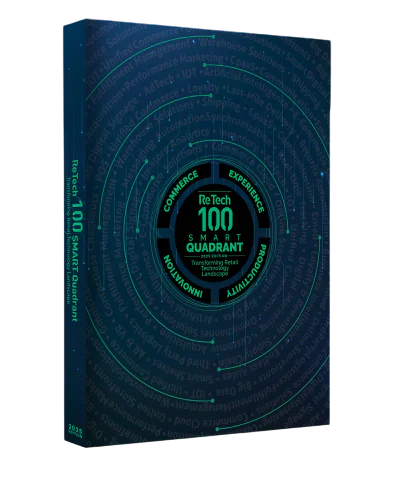
Ready to Shape the Future of Retail? Get Your Solution Recognized in the ReTech Smart Quadrant! Tech.NXT 2025 presents the first ever ReTech Smart Quadrant - a revolutionary platform designed to showcase innovative technology solutions across Commerce, Experience, Innovation, and Productivity.
Recognising India’s Retail Transformation Gurus 07 May 2025
In recognition of India’s brightest leaders shaping- retail digital transformation
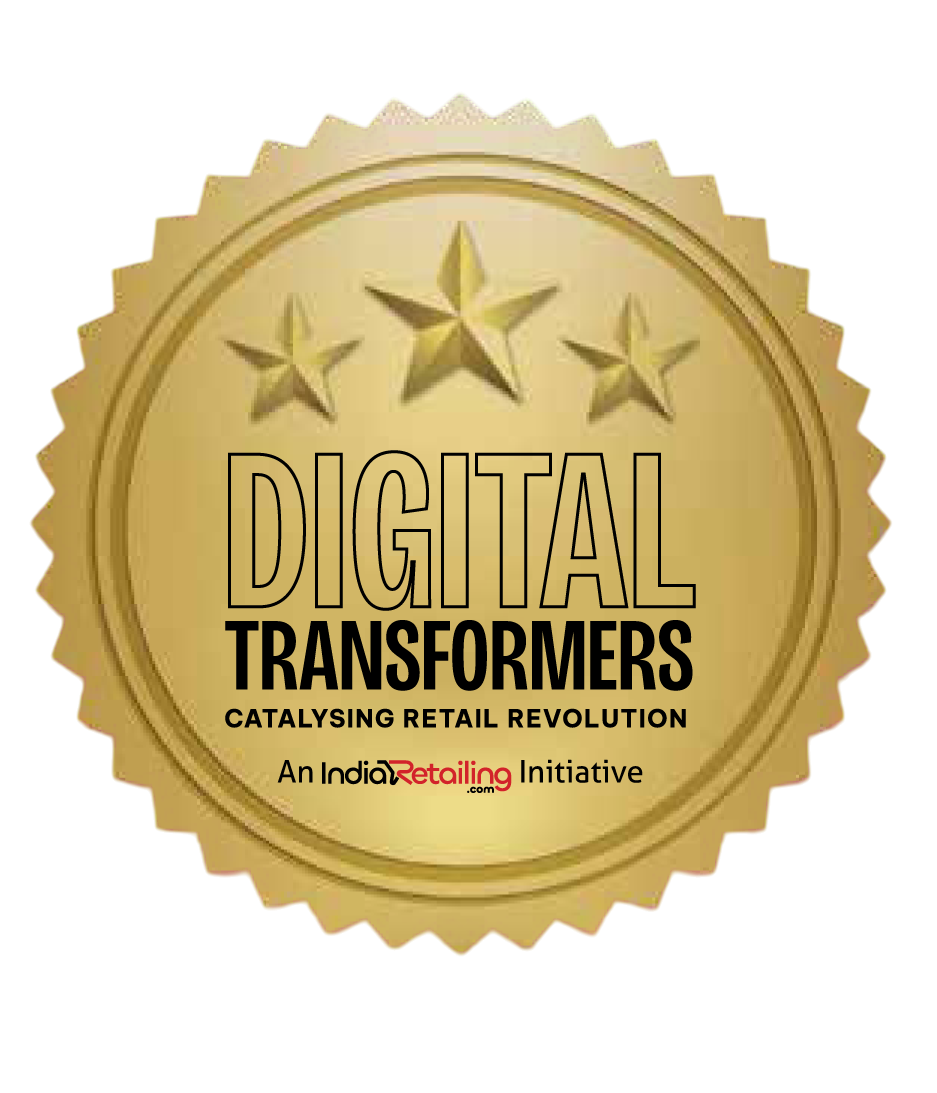

LIVE Case Studies
Exclusive 20-minute case study presentations by Retail Tech Enablers
Case studies Confirmed for Retail Tech.Nxt 2024








Please fill in your details in full below.

Case Studies
Fee Structure
3,00,000 + Tax
To be paid by Tech Solution Provider

- Exclusive 20-Minute case study presentation by Tech Solution provider to the JURY.
- 2 page Case study coverage in “Retail Tech.NXT” coffee table book / Phygital magazine.
- 2 Registration pass – Full access to meet and network during the event.
Text.NXT will host powerful, real-world
Digital Transformation successes
co-presented by retailers and
their technology partners.
Text.NXT will host powerful, real-world Digital Transformation successes co-presented by retailers and their technology partners.

Jury Evaluation Process
Each submitted case study will undergo a detailed and rigorous review process conducted by a distinguished panel of industry experts. These jury members, carefully selected for their extensive knowledge, experience, and accomplishments in the field, will meticulously evaluate each entry against a set of well-defined criteria. The evaluation will focus on key aspects such as Experience (customer engagement and satisfaction), Innovation (creativity and forward-thinking solutions), Identity (brand consistency and storytelling), Sustainability (ethical and environmental practices), Growth (market performance and scalability), and Excellence (operational efficiency and quality standards). This structured approach ensures a fair, transparent, and comprehensive assessment, highlighting brands that excel across multiple dimensions of success.
How to Get Your Solution Included
Submit Nomination
Complete the nomination form with your solution details and company information.
Evaluation Process
Our expert panel will review your submission against our evaluation criteria.
Final Selection
Selected solutions will be featured in the ReTech Smart Quadrant 2025.
Speakers 2025
Abhinav Midha
Vice President- Sales
GoKwik
Abhishek Raj
COO
Lacoste
Abhishek Ramanathan
Co-founder & COO
Nua Woman
Agendra Kumar
Managing Director
ESRI India
Akash Rambaboo
Head - Ecommerce Solutions & Loyalty
Apparel Group India
Amit Arora
CIO
SHR Lifestyle
Anil Menon
CIO
LuLu Group
Anisa Virji
Head of Ecommerce
Regal Shoes
Ankita Singh
Sales Director
ClickPost
Anwer Alvi
Head - Brands.com
Bestseller India
our past Speakers
India’s most path-breaking innovations in Retail Tech will be showcased at the Tech.NXT Awards 2025 across four areas of digital excellence.
Leading Brands & Retailers at PRC 2025


















































































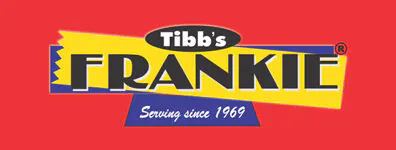




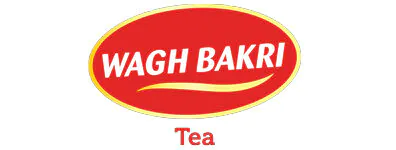




Partners 2025

OMNICHANNEL PARTNER

Analytics Partner

Revenues & Delights Partner

RFID Partner
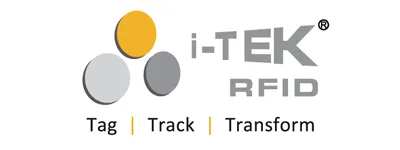
Event Partner

Retail Technology Partner

Gold Partner




Silver Partners




Bronze Partners











Knowledge Partner







Participants












Participants
Partners 2024

UNIFIED COMMERCE PARTNER

OMNICHANNEL PARTNER

PHYGITAL PARTNER

RFID PARTNER

Supported By






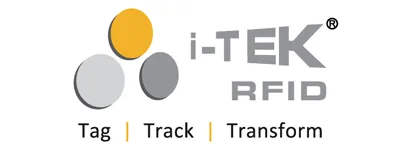
EVENT PARTNERS














Participants



















© 2025, PHYGITAL RETAIL CONVENTION (PRC). All Rights Reserved.
- ⭐ Aakash Wagle, GMR Airport Ltd.
- ⭐ Aashish Bhagat, Gravatin Global
- ⭐ Chirag Shetty, Shoppers Stop
- ⭐ Gaurav Kapoor, Swatch Group India
- ⭐ Arvind Verma, Redtape Ltd
- ⭐ Prashant Nayar, Snapmint
- ⭐ Nand Kumar, Arvind Fashion And Lifestyle
- ⭐ Anil Ippagunta, Baskin Robbins
- ⭐ Ayushi Gupta, Zerohour Hypermart
- ⭐ Dr Lawrence Fernandes, Rai
- ⭐ Shashi Kumar Pankaj, Pngsl
- ⭐ Aniket Wani, Lodha Developers
- ⭐ Nikhil Roy, Bhartiya Urban Pvt Ltd
- ⭐ Goutam Ash, Shoppers Stop
- ⭐ Syed Faheem, Wildcraft India
- ⭐ Deepak Pujari, Reliance
- ⭐ Vikram Singh Rathore, Tales & Stories
- ⭐ Anirudh Desai, Bryan And Candy I Pvt Ltd
- ⭐ Amardeep Singh, Ashok Malhotra Group
- ⭐ Shivani Aggarwal, World Of Watches
- ⭐ Manish Singh, Blackberry
- ⭐ Biswajit Patnaik, Mandate & Beyond
- ⭐ Ruturaj Patwa, Marks And Spencer
- ⭐ Amit Kumar, AKB
- ⭐ Bhuvanesh Mendiratta, Miraj Cinemas
- ⭐ Siddharajsinh Solanki, Softlogic Group
- ⭐ Shaurya Somani, Nano Theatre
- ⭐ Jasdeep Singh, Michael Page
- ⭐ Tarak Bhattacharya, Mad Over Donuts
- ⭐ Sohil Lalani, Eridani
- ⭐ Arpit Tandon, JLL
- ⭐ Animesh Kumar, Being Human
- ⭐ Tarun Narula, Core Realty
- ⭐ Sudhanva Sheshadri, Ramsons Trendsquares Realty Llp
- ⭐ Krishna Kumar Vijayan, Isthara Parks Private Limited
- ⭐ Suheil Shaikh, Metro Brands
- ⭐ Rakesh Waths, Kewal Kiran Clothing Limited
- ⭐ Satish Kottakota, NY Cinemas
- ⭐ Sachin Nakti, Shopping Centres Association Of India (Scai)
- ⭐ Mohammed Yousuf, Global Clothing Pvt Ltd
- ⭐ Benazir Miller, Tata International Ltd.
- ⭐ Aditi Dongre, Timezone
- ⭐ Mohammed Saleem, Shoppers Stop
- ⭐ Vikita Chaudhary, Kidzania India
- ⭐ Jayraj Bajaj, Dove Garments P. Ltd.
- ⭐ Musab Siddiqui, Abacus Lifestyle Brands Ltd
- ⭐ Mohit Grover, NIFT
- ⭐ Shikha S Mazumdar, Home Centre
- ⭐ Sunny Luthra, Unihawk Ventures Pvt Ltd
- ⭐ Daisy Rani, CBRE
- ⭐ Ashish Singh, Swiss Beauty
- ⭐ Sahil Gupta, ANS Retail
- ⭐ Mayank Gupta, Stove Kraft Limited
- ⭐ Akshay Anand Yadav, CBRE
- ⭐ Nitin Bir, Brookfield Properties
- ⭐ Mohammed Fazil, GLS Displays
- ⭐ Mohsin Dokaria, Orra
- ⭐ Amar Motwani, B.Kandhari Properties
- ⭐ Shivraj Singh Negi, Unlimited
- ⭐ Subha Mohan, Timezone
- ⭐ Sridhar, SPRVL
- ⭐ Nitin Bansal, Miniso
- ⭐ Harshita Dhiman, Seher Jaipur
- ⭐ Piya Bhusari, ENP Epicurean & Co
- ⭐ Rohan Jangam, Adidas
- ⭐ Vignesh Kumbhatil, Amazon
- ⭐ Sonia Sharma, Rcube Projects Private Limited
- ⭐ Sebastian Naik, Lacoste
- ⭐ Ankur Gupta, Jubilant Foodworks
- ⭐ Shravan Nawany, Acetron Spaces Llp
- ⭐ Varun Juneja, Lenskart
- ⭐ Suhani Mavani, Brand Concepts
- ⭐ Amjad Khan, Panda Street
- ⭐ Serinlal T James, Vismay
- ⭐ Naveen Veera, Secure Parking
- ⭐ Arun Ab, Libas
- ⭐ Jasmin Vora, Peora Jewellery
- ⭐ Kashyap Mehta, Pine Labs
- ⭐ Smita Joshi, Nesterra
- ⭐ Deepak Zutshi, Nexus Select Trust
- ⭐ Abhijith R, Crossword Bookstores Pvt Ltd
- ⭐ Deepa Mukherjee, Arvind Fashions Ltd.
- ⭐ Tasneem Saylawala, Naseem Perfume Llp
- ⭐ Rohit Shinde, Unimat Concepts Pvt Ltd
- ⭐ Sachin Singh, Swatch Group India
- ⭐ Harshit Kochar, Kochar Retail Ventures
- ⭐ Abhishek Saxena, Realistic Realtors
- ⭐ Mohit Shah, Abacus Lifestyle Brands Ltd
- ⭐ Lokesh Bharwani, Mad Over Donuts
- ⭐ Sandeep Malik, Bestseller
- ⭐ Manish Jeetwal, Meena Bazaar
- ⭐ Ankur Chawla, Hlp Grup
- ⭐ Mayur Kulkarni, The Shirt House
- ⭐ Anant Basudev Shadangi, Rozana Gaming And Entertainment
- ⭐ Subhadip Chatterjee, Ajay Begraj Group
- ⭐ Yerramilli Sri Chakra Visakh, Tata Croma
- ⭐ B. Aditya Kumar, Mandate & Beyond
- ⭐ Dheeraj Maini, Kenangan Coffee- India
- ⭐ Mahesh Shinde, Flowchart Retail Consultancy
- ⭐ Huzaif Hanfi, Prozone Intu
- ⭐ Dattaram Dalvi, Metro Brands
- ⭐ Ankit Chhabra, Adani Airport Holdings Limited
- ⭐ Sanjyot P Vaidya, S & O Investments.In
- ⭐ Maninder Singh Chahal, Imagicaaworld Entertainment Ltd.
- ⭐ Harsh Vardhan Arya, Infinite Solutions
- ⭐ Aditya Joshi, Mystical Group
- ⭐ Chandra Shekhar, Hear Clear
- ⭐ Naresh Kumar, Goodearth
- ⭐ Harsh, Singla Sweets
- ⭐ Satinder Singh Rawat, India Retail & Hospitality
- ⭐ Achla Chawla, Swatch Group India
- ⭐ Shailesh Mathias, Bestseller
- ⭐ Puneet Mathur, Swatch Group India
- ⭐ Vineet Rathi, Game X
- ⭐ Komal Sood, Ghoomar
- ⭐ Umesh Patil, Limelight Pan India
- ⭐ Nishith Bhanushali, Lodha Developers
- ⭐ Mohak Tyagi, Trehan Iris
- ⭐ Vikas Ladha, Kalpataru Retail Ventures Pvt Ltd
- ⭐ Shailesh Nair, Aditya Birla Fashion & Retail Ltd
- ⭐ Piyush Kalra, Sarthi Developers
- ⭐ Vikky Lagishetty, Aditya Birla Fashion & Retail Ltd
- ⭐ Aditya Mehta, Secure Parking
- ⭐ Aditya Gogia, Essel Estate Agents
- ⭐ John Bovas, Tea Post Limited
- ⭐ Saneen Abdul Azeez, Ibadi Perfumes
- ⭐ Sagar Haldankar, Baskin Robbins
- ⭐ Natasha Soni, Reia Leasing Advisory
- ⭐ Sumit Suneja, Bestseller
- ⭐ Gurman Gill, Pine Labs
- ⭐ Jharna Lalwani, Nexus Select Mall
- ⭐ Dilmeet Chadha, Wisphot
- ⭐ Shalini Priya, Michael Page
- ⭐ Jemima Rodrigues, Lodha Developers
- ⭐ Pradeep Kharat, Future Market Networks Limited
- ⭐ Rajesh Dubey, Rene
- ⭐ Harpal Singh, ANS Retail
- ⭐ Anushka Sharma, Lodha Developers
- ⭐ Rohan Vinaykiya, Save Management
- ⭐ Faizan Ali, Fancytech
- ⭐ Vivek Nair, Ramsons Trendsquares Realty Llp
- ⭐ Neeraj Modi, Vardhaman Amrante
- ⭐ Nelson Fernandes, Exalenze
- ⭐ Sumedha Jain, Jain Amar Clothing
- ⭐ Jiya Thakkar, Abni Kasper Llp
- ⭐ Thirumurthy D, Nexus Mall
- ⭐ Nishant Ranjan, Tata Croma
- ⭐ Rajeev Srivastava, Migsun
- ⭐ Ankur Purohit, Sarthi Developers
- ⭐ Santosh Doiphode, Mad Over Donuts
- ⭐ Prem Chhabra, Chaayos
- ⭐ Sharad Shukla, The Sleep Company
- ⭐ Kunal Choudhary, Sree Thirumala Infra Pvt Ltd
- ⭐ Parambir Singh, Nurix Ai
- ⭐ Chintan Roliya, Rajeshkumar Halchand Roliya
- ⭐ Jatin Mali, Jadeblue
- ⭐ Sagar Borgaonkar, Arvind Fashion And Lifestyle
- ⭐ Zeisha Lalani, Eridani
- ⭐ Gaurav Tripathi, Ciao Retail
- ⭐ Kapil Singla, Jubilant Foodworks
- ⭐ Rahul Chaudhari, Chaudhari Lifestyle Pvt Ltd
- ⭐ Harshad, Jsmp Property Consultants
- ⭐ Arjun Aran, One Galle Face Mall - Shangri-La Hotels Lanka Pvt Ltd
- ⭐ Munish Mathur, Brookfield Properties
- ⭐ Deepak Krishna Srivastava, Bharti Real Estate
- ⭐ Rajani Meena, Tvs Electronics
- ⭐ Raj Shroff, Aarayaa - The Cfi Group
- ⭐ Saurabh Mehta, Omaxe
- ⭐ Manish Vig, Aditya Birla Fashion & Retail Ltd
- ⭐ Ashish Goyal, Gdk Jewels Pvt Ltd
- ⭐ Manish Jain, Maetrix Consulting
- ⭐ Khirod Mahapatra, Max
- ⭐ Navjot Nanda, GMR Airport Ltd.
- ⭐ Tanmay Pawar, Fabmaven
- ⭐ Bimalendu Tarafdar, Sanjay Ghodawat Group
- ⭐ Harshal P, Biretail
- ⭐ Kenjiro Ikawa, Gdx Commerce India
- ⭐ Nissan Joseph, Metro Brands
- ⭐ Rahul Kumar, Ambuja Neotia
- ⭐ Dileep Lodhi, Aadi Realtors
- ⭐ Karan Modi, B.Kandhari Properties
- ⭐ Kamal Vaishnav, Haldiram
- ⭐ Brinder Rault, Allegro Moderato International
- ⭐ Udit Mittal, Rdp Retail Hub Pvt Ltd
- ⭐ Jayshree Shah, Jus Jumpin
- ⭐ Rahul Mishra, Sonahul Properties Private Limited
- ⭐ Anirban Kundu, Ambuja Neotia
- ⭐ Pradeep Tailor, BHPC Personal Care P. Ltd.
- ⭐ Rushabh Patel, Save Management
- ⭐ Asha Kumari, Unison
- ⭐ Akash Tiwari, BPCL
- ⭐ Jo John Simon, Realistic Realtors
- ⭐ Anirudha Padmanabhan, SPRVL
- ⭐ Abhinav Agarwal, Chaayos
- ⭐ Rahul Patil, Pngsl
- ⭐ Amit Garg, Cinepolis
- ⭐ Rahul Desai, Roman Group
- ⭐ Sandesh Utekar, Bryan And Candy I Pvt Ltd
- ⭐ Ovais Ali, Beccos
- ⭐ Sandeep D. Chauhan, Magnaterra Realty P. Ltd.
- ⭐ Jatin Thakkar, Jash Enterprise
- ⭐ Uttam Kumar, Salzaa-Fashion In Minutes
- ⭐ Monica Sharma, Bharti Real Estate
- ⭐ Aditya Agarwal, Westway Group
- ⭐ Vishal Gupta, Guptasons Infra Pvt. Ltd (Ciril)
- ⭐ Abhishek Kumar, Metro Brands
- ⭐ Anantha Swami, Tibbs Food
- ⭐ Rohit Koul, Realkey Advisory India Llp
- ⭐ Jyoti Sinha, Khaitan & Co
- ⭐ Gursher Singh, Infinity Realtors
- ⭐ Rachna Lanewala, The One Off
- ⭐ Bornali Deb, Haldiram
- ⭐ Shahid Bichu, Brandzstrom
- ⭐ Ankur Maheshwary, Modern Masti Pvt Ltd
- ⭐ Akshay Gite, Trent
- ⭐ Anup Debroy, Mantri Developer
- ⭐ Srirup Sen, Ambuja Neotia
- ⭐ Harinoor Jham, Tanvi Real Advisory
- ⭐ Paras Vats, Apparel Group India Pvt Ltd
- ⭐ Sam Shalgaonkar, X-Rite India Private Limited
- ⭐ Kartik Pathak, Saffron Lifetsyle
- ⭐ Saman Singh, Oud Arabia
- ⭐ Anubhav Aggarwal, Big Steps Ventures Pvt. Ltd.
- ⭐ Jayy Roshan Chawlaa, Roshans Infradeal
- ⭐ Lalit Manchanda., Guptasons Infra Pvt. Ltd (Ciril)
- ⭐ Kirti Bhushan, Guess India
- ⭐ Rajesh Dube, Haldiram
- ⭐ Milin Rohinesh, Cushman & Wakefield
- ⭐ Unmisha Bhatt, Tonic Worldwide
- ⭐ Vishal Gupta, Mantri Developer
- ⭐ Himanshu Narendra Somaiya, Himanshu Narendra Somaiya
- ⭐ Srushti Khedekar, Mad Over Donuts
- ⭐ Srishti Tanwani, Zenzior Brand Technology Pvt. Ltd.
- ⭐ Simi Gangeria, Runwal Realty
- ⭐ Namrata Bansal, Aishwaryam Group
- ⭐ Kamal Shah, Tata Technologies
- ⭐ Kanika Malkotia, Pvr Inox Ltd.
- ⭐ Juhi Parekh, Arvind Fashion And Lifestyle
- ⭐ Ajay Ajmera, Ajmera Fashion Limited
- ⭐ Devansh Mansingka, Shree Mansingka Projects Ltd
- ⭐ Amanpreet Banga, Amanpreet Banga Advisory Llp
- ⭐ Abhishek Maria, Aditya Birla Fashion & Retail Ltd
- ⭐ Onkar Shetye, Aurum Realestate Developers Ltd
- ⭐ Preeti Singh, Unison
- ⭐ Utsaa Roy, Being Human
- ⭐ Radhika Agrawal, Krishna United
- ⭐ Joshveen Kaur, Seher Jaipur
- ⭐ Himanshu Srivastava, Mvn Infra
- ⭐ Sanjay Yadav, BPCL
- ⭐ Bhavesh Navadiya, Alan Scott Retail Ltd
- ⭐ Bharat Kaul, Image Fashion'S
- ⭐ Ameya Jadhav, Roman Group
- ⭐ Amit Garg, Idigizen Pvt. Ltd.
- ⭐ Umang Vora, The Belgian Waffle Co
- ⭐ Ahmad Raza Khan, Wook Realty
- ⭐ Liton Das, Nurix Ai
- ⭐ Nandkishor Mehta, Ks Ruchi Lifestyle Pvt Ltd
- ⭐ Rajanesh Nair, Aditya Birla Fashion & Retail Ltd
- ⭐ Rahul Gupta, Trent
- ⭐ Narendra Thakkar, Ariane Group
- ⭐ Arvind Thakur, Mystical Group
- ⭐ Mohammed Rehan Ali, Global Clothing Pvt Ltd
- ⭐ Kartik Lakhotia, Nykaa
- ⭐ Rajesh P S, Chaayos
- ⭐ Rahul Sewaiwar, Alka Trading
- ⭐ Vishal Shah, Good Flippin Burgers
- ⭐ Kapil Sachdeva, RAI
- ⭐ Harmanpreet Singh, Food Exotica Pvt Ltd
- ⭐ Arvind Mayar, Secure Parking
- ⭐ Deva Jyotula, Kalpataru Retail Ventures Pvt Ltd
- ⭐ Suryansh Saraf, Mumuso
- ⭐ Gyanendra Jha, Absolute Brand
- ⭐ Anand Balasubramanian, Shoppers Stop
- ⭐ Ranjeet Thakur, Eversub India Pvt Ltd
- ⭐ Vipul Mehra, Aditya Birla Fashion & Retail Ltd
- ⭐ Rishi Bansal, Bansal Aesthetics
- ⭐ Parisha Trivedi, Jadeblue
- ⭐ Mohammed Arif, Arvind Fashion And Lifestyle
- ⭐ Manoj Chouhan, Cultfit Healthcare Private Limited
- ⭐ Shivangi Bhatnagar, Unison
- ⭐ Ajinkya Joshi, Mystical Group
- ⭐ Sugandha Goyal, Gdk Jewels Pvt Ltd
- ⭐ Pritam Suru, Lotus Marketplace Pvt Ltd
- ⭐ Madhur Laddha, Tapadia City Centre
- ⭐ Jermina Menon, Bhartiya Urban Pvt Ltd
- ⭐ Manpreet Singh Vohra, Rozana Gaming And Entertainment
- ⭐ Shubhojit Pakrasi, Omaxe
- ⭐ Ram Nitesh Jaldu, Helios Greens
- ⭐ Kushal Bhagat, Zero Hour Store
- ⭐ Ramyaraj Rath, Style Baazar
- ⭐ Krishna Sumanth, Alphabake
- ⭐ Anupam Agrawal, Max
- ⭐ Subhankar Bhattacharya, Mad Over Donuts
- ⭐ Rupam Bhattacharjee, Waysahead Technology Pvt. Ltd.
- ⭐ Nirzar Jain, Nexus
- ⭐ Bhavesh Gajjar, Kidzania India
- ⭐ Arpan Tyagi, Arvind Fashion And Lifestyle
- ⭐ Tejas Jadhav, Brand Concepts
- ⭐ Rajeev Sharma, Blackberry
- ⭐ Pankaj Lanke, Nano Theatre
- ⭐ Rethun Manikkoth, Bhartiya Urban Pvt Ltd
- ⭐ Nazim Virji, Regal Shoes
- ⭐ Nitin Saraf, Being Human
- ⭐ Naveen Goel, Panchanan Intl
- ⭐ Saurabh Ramdorai, Klipt By Bova
- ⭐ Arshdeep, Oud Arabia
- ⭐ Sandeep Agrawal, Rene
- ⭐ Shekhar Kochar, Kochar Retail Ventures
- ⭐ Ashish Pandey, Cineline India Ltd
- ⭐ Arnab Banerjee, Nangia Andersen Llp
- ⭐ Ragvendra Vikram, Unison
- ⭐ Zainab Fatima, Shibui-Health And Wellness
- ⭐ Preet Lamba, Being Human
- ⭐ R. Karthikeyan, Bangalore International Airport Limited
- ⭐ Inubhai, Inchrealtor
- ⭐ Raina Roy, V Bazaar
- ⭐ Nilay Thakkar, Ariane Group
- ⭐ Shaliq Saleem, Varikkodan Garments
- ⭐ Sharath Kumar S, Shibui-Health And Wellness
- ⭐ Manish Srivastava, Gravatin Global
- ⭐ Parind Ankleshwaria, Metro Brands
- ⭐ Afzal Shaikh, Crossword Bookstores Pvt Ltd
- ⭐ Devesh Kumar, Max
- ⭐ Rashid Shaikh, Ecity Real Estates Pvt.Ltd (Fun Republic)
- ⭐ Shanith Godagama, One Galle Face Mall - Shangri-La Hotels Lanka Pvt Ltd
- ⭐ Prem Kumar Singh, Goods & Foods
- ⭐ Vivek Jaiswal, Amazon Shipping
- ⭐ Vaagesh Muttreja, Relation Realtech Pvt. Ltd.
- ⭐ Bhanu Sundra, Rrbv
- ⭐ Krashnika Bansal, Ecavo Agro Daily Pvt. Ltd.
- ⭐ Ishmeet Singh Vohra, Rozana Gaming And Entertainment
- ⭐ Sudhir Dnyanwal, Metro Brands
- ⭐ Pankaj Pandey, Brookfield Properties
- ⭐ Sumana Iyengar, Goavega Software India Pvt Ltd
- ⭐ Fatima Zohra Feroz, Shibui-Health And Wellness
- ⭐ Rajat Makkar, Growvisorrealty
- ⭐ Sulochana Sharma, Neo Risk Management And Insurance Brokers
- ⭐ Ammol Ramtteke, Haldiram
- ⭐ Karan Arora, Big Steps Ventures Pvt. Ltd.
- ⭐ Sakshi Vasandani, Core Realty
- ⭐ Vidit Dedhia, Onestop Retail Pvt Ltd
- ⭐ Monica Rohra, Atmosphere-The Store Makers
- ⭐ Surender Pal, Bhutani Infra
- ⭐ Jayashree Birje, Crimailed
- ⭐ Arun P, SPRVL
- ⭐ Amit Chawla, Mustard Clothing Company Pvt Ltd
- ⭐ Shirish Handa, Aditya Birla Fashion & Retail Ltd
- ⭐ Ashok Mukhi, Solar Creations Pvt Ltd
- ⭐ Manjeet Singh, Pvr Inox Ltd.
- ⭐ Harshad Almelkar, Nesterra
- ⭐ Bhai Gurjinder Singh, Nh7 Factory Outlet
- ⭐ Vipula Poddar, Brookfield Properties
- ⭐ Jiyahoor Shaikh, Baggit India Pvt. Ltd.
- ⭐ Adish Oswal, Oswal Group
- ⭐ Upendra Taneja, Signature Global
- ⭐ Shahab Mitha, Exalenze
- ⭐ Sandeep Pk, Tvs Electronics
- ⭐ Viju Machery, Secure Parking
- ⭐ Nirav Momaya, Baskin Robbins
- ⭐ Shashank Sinha, Modern Masti Pvt Ltd
- ⭐ Karan Bansal, Wisphot
- ⭐ Prashant Brahmane, Tea Post Limited
- ⭐ Minesh Prajapati, Sadguru Clothing Co
- ⭐ Surbhi Aggarwal, Mantri Developer
- ⭐ Anant Chhabra, Sree Thirumala Infra Pvt Ltd
- ⭐ Ankush Goyal, MRG Fashions P. Ltd.
- ⭐ Simran Chandhoke, Swatch Group India
- ⭐ Kketan, Kenee Ventures - Mall Advisory & Showroom Leasing
- ⭐ Mandar Sudhir Kamat, Landmark Group
- ⭐ Prachur Baheti, Trent
- ⭐ Harshita Thakkar, Abni Kasper Llp
- ⭐ Suhas Dhage, Being Human
- ⭐ Ashish Kanakia, Cineline India Ltd
- ⭐ Suman Mondal, Ambuja Neotia
- ⭐ Pragun Ranjan, Brookfield Properties
- ⭐ Arjun Gupta, Rozana Gaming And Entertainment
- ⭐ Shreyes Shekhar, Life Pharmacy
- ⭐ Nikhil Shah, Fabmaven
- ⭐ Lokesh Mishra, Liberty Shoes
- ⭐ Daksha Poptani, NY Cinemas
- ⭐ Parag Agrawal, BPCL
- ⭐ Gurjeet Raheja, Hlp Grup
- ⭐ Sohail Patca, D S Corporation
- ⭐ Shitij Chawla, Marks And Spencer
- ⭐ Gaurav Bansal, Felix Realty
- ⭐ Akash Kumar, Fancytech
- ⭐ Srinivas Kolluru, Ghodawat Retail Private Limited
- ⭐ Diksha Bhatia, Gioia
- ⭐ Saurabh, Singla Sweets
- ⭐ Gaurav Thakore, Metro Brands
- ⭐ Luke Thomas, Mela Platforms Pte Ltd
- ⭐ Vipul Chaudhari, Chaudhari Lifestyle Pvt Ltd
- ⭐ Arun Ganapathy, Zenith Cfo Support Llp
- ⭐ Alexandra Crepin, Etai Infopro Digital
- ⭐ Preeti Singh, Bhutani Infra
- ⭐ Smita Khanna, Aditya Birla Fashion & Retail Ltd
- ⭐ Abhishek Gupta, Ecavo Agro Daily Pvt. Ltd.
- ⭐ Milan Dave, Cushman & Wakefield
- ⭐ Hardik Khetia, Rai
- ⭐ Vikash Baid, Mad For Waffles
- ⭐ Manish Srivastava, Realistic Realtors
- ⭐ Abhishek, Vardhaman Amrante
- ⭐ Bharat Gabani, Zenzior Brand Technology Pvt. Ltd.
- ⭐ Mayur Kamath, Bestseller
- ⭐ Karun Mehta, Khaitan & Co
- ⭐ Deepak Modi, Bestseller
- ⭐ Ajay Bindroo, Beverly Hills Polo Club
- ⭐ Sarbjeet Singh, Tdi Infratech Ltd.
- ⭐ Chendhuran, SPRVL
- ⭐ Het Shah, Ags Group Inc
- ⭐ Sudhanshu Kejriwal, Keydemand
- ⭐ Inderdeep Singh, Wisphot
- ⭐ Suresh Jayawardana, Softlogic Group
- ⭐ Sanjive Datta, Prime Leasing Solutions
- ⭐ Vivek Jain, Being Human
- ⭐ Minal Dhamankar, Adani Airport Holdings Limited
- ⭐ Abhilasha Katwale, Tibbs Food
- ⭐ Arnab Choudhury, Baskin Robbins
- ⭐ Chintan Gala, Mad Over Donuts
- ⭐ Vilas Gajbhiye, Rene
- ⭐ Sharath Varma, GMR Interchange Hyderabad
- ⭐ Sanya Runwal, Runwal Realty
- ⭐ Ankita Verma, Cushman & Wakefield
- ⭐ Lakhbir Singh, Kewal Kiran Clothing Limited
- ⭐ Kanika Agarwal, Westway Group
- ⭐ Gagandeep Singh Gandhi, Infinity Realtors
- ⭐ Shubhank Parashar, Aditya Birla Fashion & Retail Ltd
- ⭐ Rajesh Chokhani, Shibui-Health And Wellness
- ⭐ Sidak Dua, Ashok Malhotra Group
- ⭐ Zoheb Khan, Bare International
- ⭐ Sachin Sachdeva, Gravatin Global
- ⭐ Gopal Machani, Scai
- ⭐ Santanu Pai, Pvr Inox Ltd.
- ⭐ Gaurav Pande, Jubilant Foodworks
- ⭐ Shagufta Iqbal, Bhartiya Urban Pvt Ltd
- ⭐ Aradhya Bajpai, Pepe Jeans London
- ⭐ Fairoze Khan, Hay! Clothing
- ⭐ Shivani Bhatia, Realty Advisors India
- ⭐ Anuradha Singh, Runwal Realty
- ⭐ Mihir Suvanam, Michael Page
- ⭐ Sushil Singh, Trehan Iris
- ⭐ Murtuzza Bhatia, Klipt By Bova
- ⭐ Lalit Rawat, Core Realty
- ⭐ Urmi Singh, Brand Concepts
- ⭐ Pari Sheth, Amazon Shipping
- ⭐ Ruta Machekar, Mad Over Donuts
- ⭐ Abhijit Mandal, Ciel Group
- ⭐ Amit Rout, Nykaa
- ⭐ Amit Jeswani, Waisted Leather Products Llp
- ⭐ Aashi Mishra, Ghoomar
- ⭐ Manish Sharma, Karigari Ventures P Ltd
- ⭐ Amir Md, Ajfan Dates And Nuts
- ⭐ Vikram Narula, Ajwain Watches
- ⭐ Anurag Mishra, Rozana Gaming And Entertainment
- ⭐ Mukesh Kumar, Growvisorrealty
- ⭐ Mukesh Kumar Goyal, MRG Fashions P. Ltd.
- ⭐ Amol Bhatt, Haldiram
- ⭐ Anshika Gupta, Highway Hub Amenity Private Limited
- ⭐ Krishna Yadav, Secure Parking
- ⭐ Devan Girdhar, Unlimited
- ⭐ Virent Gala, Gute Reise India Pvt. Ltd.
- ⭐ R Ravikumar, Ppms Field Marketing Pvt Ltd
- ⭐ Vijay Kapoor, Brand Width Realty
- ⭐ Ankur Mittal, Shri Vinayaka Group
- ⭐ Gopalakrishna Machani, Shopping Centres Association Of India (Scai)
- ⭐ Ravinder Tokas, Doner & Burger
- ⭐ Rajeev Kalia, Whiteland Corporation Pvt Ltd
- ⭐ Raunak Agarwal, Mumuso
- ⭐ Subrat Biswal, Swatch Group India
- ⭐ Gautam Jain, Rai
- ⭐ Karan Sukeja, Ashok Malhotra Group
- ⭐ Vineet Narang, Hear Clear
- ⭐ Firil M Faisal, Ibadi Perfumes
- ⭐ Siddharth Kapoor, Pvh Arvind Fashion
- ⭐ Kunal Sheth, Metro Brands
- ⭐ Ajay Kumar, Guess India
- ⭐ Riya Goel, Westway Group
- ⭐ Brijay Arya, Adani Airport Holdings Limited
- ⭐ Aditya Paralikar, Nyati Group
- ⭐ Faisal Dhorajiwala, D S Corporation
- ⭐ Shivender Panwar, Smartq-Compass Group
- ⭐ Abdul Rahman, Figalus Fruits And Nuts Pvt Lts ( Nut Bazar)
- ⭐ Sunil Kumar, Headstart Global Pvt Ltd
- ⭐ Barun Kumar, Smartq-Compass Group
- ⭐ Kunal Kapoor, Nykaa
- ⭐ Aditya Kapoor, Theobroma Foods Pvt Ltd
- ⭐ Cherishma Mehta, The One Off
- ⭐ Deepka Kumar Anchalia, Ventota Retail
- ⭐ Vikas Sharma, Kewal Kiran Clothing Limited
- ⭐ Dileep Kumar Gupta, Ss Property
- ⭐ Nitin Kharbanda, Aditya Birla Fashion & Retail Ltd
- ⭐ Salim Khan, Planet Retail Holdings Pvt Ltd
- ⭐ Lovelish Arora, Everge Smart India Pvt. Ltd
- ⭐ Samant Jerath, Jerath Properties
- ⭐ Kamal Grover, Aditya Birla Fashion & Retail Ltd
- ⭐ Kannan Sundaram, BPCL
- ⭐ Anish Paul, Swatch Group India
- ⭐ Ambareesh, Industree Solutions Llp
- ⭐ Sunil Zadane, Nesterra
- ⭐ Abhishek Anand, Ciel Group
- ⭐ Mona Srivastava, BPCL
- ⭐ Sudheendra Bhardwaj, Infinite Solutions
- ⭐ Mohit Ajmera, Ajmera Fashion Limited
- ⭐ Deven Mukhi, Solar Creations Pvt Ltd
- ⭐ Ashok Pathirage, Softlogic Group
- ⭐ Varun Marwah, Bestseller
- ⭐ Manan Bedi, Unimanya Works Pvt Ltd
- ⭐ Abhinav Khanna, Hear Clear
- ⭐ Durga Rajasekar, Sozial Haus
- ⭐ Vishwas Khadke, 24Buy7 Vendings
- ⭐ Mayur Ashtekar, Snitch Apparels Private Limited
- ⭐ Suvneet Ahuja, Reliance Brands Limited
- ⭐ Sandeep, Ashok Malhotra Group
- ⭐ Pratiksha Save, Tapadia City Centre, Amravati
- ⭐ Durgesh Kapur, Knight Frank (India) Pvt. Ltd.
- ⭐ Ramaraju K N, Bhartiya Urban Pvt Ltd
- ⭐ Anshuman Atul, Rozana Gaming And Entertainment
- ⭐ Ranjit Lute, Relation Realtech Pvt. Ltd.
- ⭐ Arihant Jain, Conscious Mithaiwala
- ⭐ Vinod Mendonca, Pvr Inox Ltd.
- ⭐ Naveedh Vv, Make Your Own Perfume (Myop) Llp
- ⭐ Abhinav C Ajmera, Omaxe
- ⭐ Kunal Sawhney, Cineline India Ltd
- ⭐ Mukesh Vasani, City Property Service
- ⭐ Mariya Mukhtiar, Theobroma Foods Pvt Ltd
- ⭐ Md Jaseem, Abacus Lifestyle Brands Ltd
- ⭐ Haris Hanfi, Prozone Intu
- ⭐ Akshay Autade, Blackberry
- ⭐ Shruti Kaila, Nexus Elante
- ⭐ T Sreedhar, Red Rose Supermarket
- ⭐ Anupam Kumar, GMR Airport Ltd.
- ⭐ Ajay Agarwal, Seacom Next Llp
- ⭐ Arul Nadar, Aurum Retail Ventures Pvt Ltd
- ⭐ Maneesh Gaur, Pvr Inox Ltd.
- ⭐ Jimesh Vakharia, Being Human
- ⭐ Anil Shankar, Tata International Ltd.
- ⭐ Nazir Husain, GMR Interchange Hyderabad
- ⭐ Aniket Dubey, The Souled Store
- ⭐ Aaryan Bansal, Liberty Shoes Limited
- ⭐ Arjun Gupta, Sikka Group
- ⭐ Vishwa Mohan, South Avenue Mall
- ⭐ Neha Sharma, Nexus Seawoods
- ⭐ Akram Hameed, GMR Airport Ltd.
- ⭐ Subod Khanduri, Crazy Noodles
- ⭐ Sanjeev Wadhwani, Kewal Kiran Clothing Limited
- ⭐ Sameer Bargir, Baskin Robbins
- ⭐ Kuldeep Sharma, Gdx Commerce India
- ⭐ Prem Sadhwani, Sanitized Ag
- ⭐ Vikas Agarwal, Vivacity Mall Pvt Ltd
- ⭐ Jatin Sikka, Blackberry
- ⭐ Vidhi Mevawala, Limelight Pan India
- ⭐ Sumeet Bhasin, Global Foyer Mal
- ⭐ Jason Cardozo, Kewal Kiran Clothing Ltd.
- ⭐ Prathamesh Lele, Strch
- ⭐ Abhinav Raina, Realkey Advisory India Llp
- ⭐ Pardeep Parmar, Mumuso
- ⭐ Meghna Trivedi, Miraj Cinemas
- ⭐ Manjot Singh, Jassal Developers
- ⭐ Chandan Rane, Kraus Casuals
- ⭐ Isha Behl, Marks And Spencer
- ⭐ Ashish Gupta, Tata Croma
- ⭐ Sanjay Tek, Jubilant Foodworks
- ⭐ Aneesha Seth, Knight Frank (India) Pvt. Ltd.
- ⭐ Mihir Somaiya, West Pioneer Properties (I) Pvt. Ltd.
- ⭐ Switi Chaurgade, Haldiram
- ⭐ Amit Manocha, Apollo Creation
- ⭐ Ahmedhasan Rizvi, Jubilant Foodworks
- ⭐ Rajesh Gupta, Rai
- ⭐ Govind Menon, Pavilions & Interiors India P. Ltd
- ⭐ Mohammed Zia Ur Rehman, Red Rose Supermarket
- ⭐ Raj Kujur, Avinash Developers Pvt Ltd
- ⭐ Kunal Miglani, Cinepolis
- ⭐ Shekhar Sharma, Brookfield Properties
- ⭐ Ajit Mishra, Imagicaaworld Entertainment Ltd.
- ⭐ Sanjay Sharma, Rasita Pure Lifestyle Llp
- ⭐ Aman Trehan, Trehan Iris
- ⭐ Robert, Mantri Developer
- ⭐ Yug Soni, Rr Spectrum Mall By Laabham
- ⭐ Sanntosh Shelar, NY Cinemas
- ⭐ Akhil Jain, Jain Amar Clothing
- ⭐ Rushina Shah, Bluestone Jewellery And Lifestyle Ltd
- ⭐ Brijesh Vora, Realty Advisors India
- ⭐ Shrikant Sampat, Chaudhari Lifestyle Pvt Ltd
- ⭐ Sanjeev Bhardwaj, Nexus Select Mall
- ⭐ Pankkaj Bagnani, HP Inc
- ⭐ Saurabh Jain Barjatya, Bahubali Group
- ⭐ Ankur Pilania, Flipkart
- ⭐ Arijit De, Vardhaman Amrante
- ⭐ Pushpa Kandpal, Mars Cosmetics Pvt. Ltd.
- ⭐ Siddhant Pundir, Rdp Retail Hub Pvt Ltd
- ⭐ Lalit Gupta, Levis
- ⭐ Amit Khanna, Blackberry
- ⭐ Priyank Kothari, Vivacity Mall Pvt Ltd
- ⭐ Naveen Madan, Haldiram
- ⭐ Ravi Punjabi, Kraus Casuals Pvt. Ltd
- ⭐ Mahendra Tiwari, Panache
- ⭐ Saumya Agarwal, Unimanya Works Pvt Ltd
- ⭐ Akash Srivastava, Raymond Lifestyle Ltd
- ⭐ Chandan Pratap Singh, Shoppers Stop
- ⭐ Shikha Rani Doss, Base Linker
- ⭐ Mitt Limbachia, Tea Post Limited
- ⭐ Manish Mathew, Pikspire Studio Pvt Limited
- ⭐ Rahul Shah, Snapmint
- ⭐ Rahul Dhyani, Connplex Cinemas
- ⭐ Arpit Agarwal, Image Fashion'S
- ⭐ Amritpal Singh, Food Exotica Pvt Ltd
- ⭐ Deepal Makwana, Kingsmen India Pvt Ltd
- ⭐ Vikas Arora, Realistic Realtors
- ⭐ Alakananda Das, Manyavar
- ⭐ Lijin Varghese, Brookfield Properties
- ⭐ Vivek Detroja, Limelight Pan India
- ⭐ Maheshraj Kulkarni, Gute Reise India Pvt. Ltd.
- ⭐ Ninad Umargekar, Hello Art And Design Pvt. Ltd.
- ⭐ Deepak Mansingka, Shree Mansingka Projects Ltd
- ⭐ Kartik Iyer, Keydemand
- ⭐ Tabrez Khan, Apollo Creation
- ⭐ Ambrish Miyani, Zenzior Brand Technology Pvt. Ltd.
- ⭐ Carolina Gautron Lelong, Etai Infopro Digital
- ⭐ Zulqadar Jafarahmad Kagzi, Lotus Marketplace Pvt Ltd
- ⭐ Punita Dwivedi, Planet Retail Holdings Pvt Ltd
- ⭐ Hitesh Rajpurohit, Hayd
- ⭐ Hemant, Unihawk Ventures Pvt Ltd
- ⭐ Rajiv Bhatia, Gioia
- ⭐ Sanjeev Gupta, Arvind Fashions Ltd.
- ⭐ Srinivas Kr, Metro Cash And Carry India Ltd
- ⭐ Atish Pawar, Mars Cosmetics Pvt. Ltd.
- ⭐ Kawal Bagga, 360 Degree
- ⭐ Pavan Kumar Ramdasi, GMR Airport Ltd.
- ⭐ Anil Jain Barjatya, Bahubali Group
- ⭐ Raunaq Potdar, Brookfield Properties
- ⭐ Chandrakant Mokal, Maharashtra State Mango Growers Asso.
- ⭐ Ratnesh Jain, Marks And Spencer
- ⭐ Aadesh Tripathi, Saffron Lifetsyle
- ⭐ Sitanshu Chheda, Mango Stationery Pvt Ltd
- ⭐ Manish D Sankla, JLL
- ⭐ Rahul Choudhary, Modern Masti Pvt Ltd
- ⭐ Gurmeet Singh, Jassal Developers
- ⭐ Tanishq Agarwal, Ajay Begraj Group
- ⭐ Prem Deshpande, Pngsl
- ⭐ Vivek Singhal, BPCL
- ⭐ Akshay Krishna, Fancytech
- ⭐ Sanit Amilineni, Toffee Doodle
- ⭐ Aditya Sharma, The Souled Store
- ⭐ Ayaz Waris Khan, Isthara Parks Private Limited
- ⭐ Anku Buragohain, Stove Kraft Limited
- ⭐ Ankita Kothari, X-Rite India Private Limited
- ⭐ Akash Nagpal, Trehan Iris
- ⭐ Anu Gambhir, Bharti Real Estate
- ⭐ Tarandeep Singh Sekhon, Kidzania India
- ⭐ Shivam Singh, Blackberry
- ⭐ Adam Nazar, Life Pharmacy
- ⭐ Shruthi Poojary, Brookfield Properties
- ⭐ Vikas Sankla, Gdx Commerce India
- ⭐ Harish Sharma, Abfrl (Tcns Division)
- ⭐ Aleesha Desai, Baskin Robbins
- ⭐ Kumar Rajagopalan, Rai
- ⭐ Mohit Chadda, Ad Fashion World
- ⭐ Akshay Solanki, Unison
- ⭐ Abhinav Jain, Nykaa
- ⭐ Kalpesh Mashru, Metro Brands
- ⭐ Mohit Koul, Realkey Advisory India Llp
- ⭐ Gaurav Maggo, Roshans Infradeal
- ⭐ Tarun Kumar Sharma, Ajmera Fashion Limited
- ⭐ Swati Pandey, Unison
- ⭐ Adesh Kumar, Reliance Retail
- ⭐ Rohit Khanna, Bhutani Infra
- ⭐ Hitesh Bhanushali, Tapadia City Centre
- ⭐ Sanjeev Ghanshyam Tiwari, Krishna United
- ⭐ Milind Sontakke, Gute Reise India Pvt. Ltd.
- ⭐ Yogesh Sharma, Karigari Ventures P Ltd
- ⭐ Mugdha Patil, Rai
- ⭐ Anil Kumar Sharma, GMR Airport Ltd.
- ⭐ Sachin Dhawade, One Galle Face Mall - Shangri-La Hotels Lanka Pvt Ltd
- ⭐ Prachi Bahri, Select Infrastructure Pvt.Ltd
- ⭐ Ashwin Jain, N. K. Jain & Co. (Estd. 1962)
- ⭐ Ravinder Bhateja, Smartq-Compass Group
- ⭐ Vikas Goenka, Sidvin Group
- ⭐ Rudraksh Kumar, Signature Global
- ⭐ Kavith Pankaj Sainaani, Mukti And Kavith Casa Llp
- ⭐ Jitendra Mangave, Metro Brands
- ⭐ Saumay Aggarwal, World Of Watches
- ⭐ Shweta Parkar, Nesterra
- ⭐ Kanchan Shah, Brand Concepts
- ⭐ Madhu Kannan, Abfrl (Tcns Division)
- ⭐ Tanay Baride, Cushman & Wakefield
- ⭐ Partha Pratim, Swatch Group India
- ⭐ Manish Swaroop, Signature Global
- ⭐ Rashmi Dharwal, Kgk Realty (India) Limited
- ⭐ Deepak Mane, MD Group
- ⭐ Bhaskara Kempaiah, Organic Mandya
- ⭐ Chetan Asher, Tonic Worldwide
- ⭐ Bhushan Makheja, Haldiram
- ⭐ Atiya Imtiyaz Rafugar, Lotus Marketplace Pvt Ltd
- ⭐ Arjun Sukhija, Ruvido Caso Llp
- ⭐ Shubham Goyal, 24Buy7 Vendings
- ⭐ Jitendra Kumar, Realistic Realtors
- ⭐ Md Maqsood Alam, Mobida Enterprises
- ⭐ Naitik Soni, Cushman & Wakefield
- ⭐ Pavan Sharma, Adani Airport Holdings Limited


















